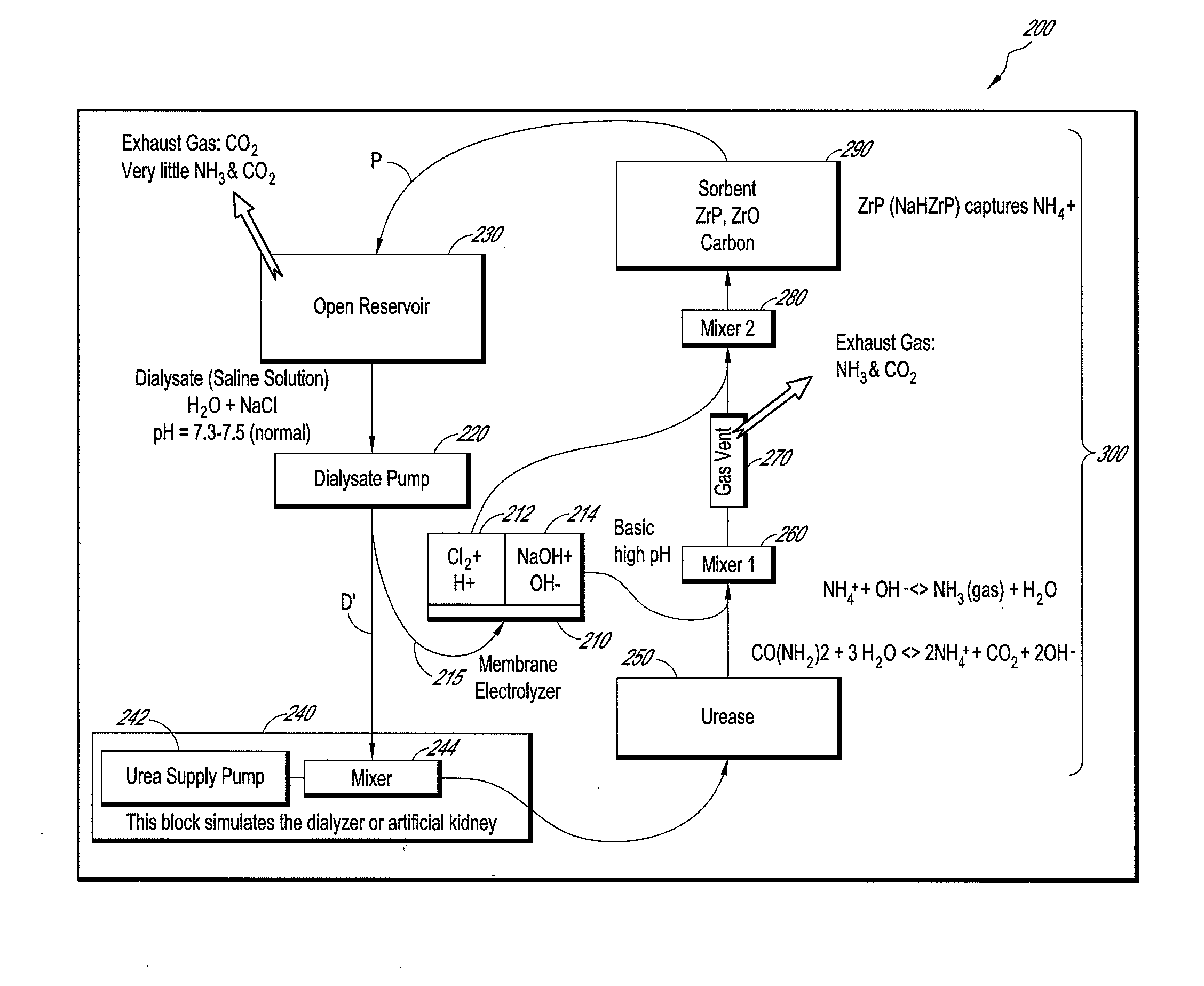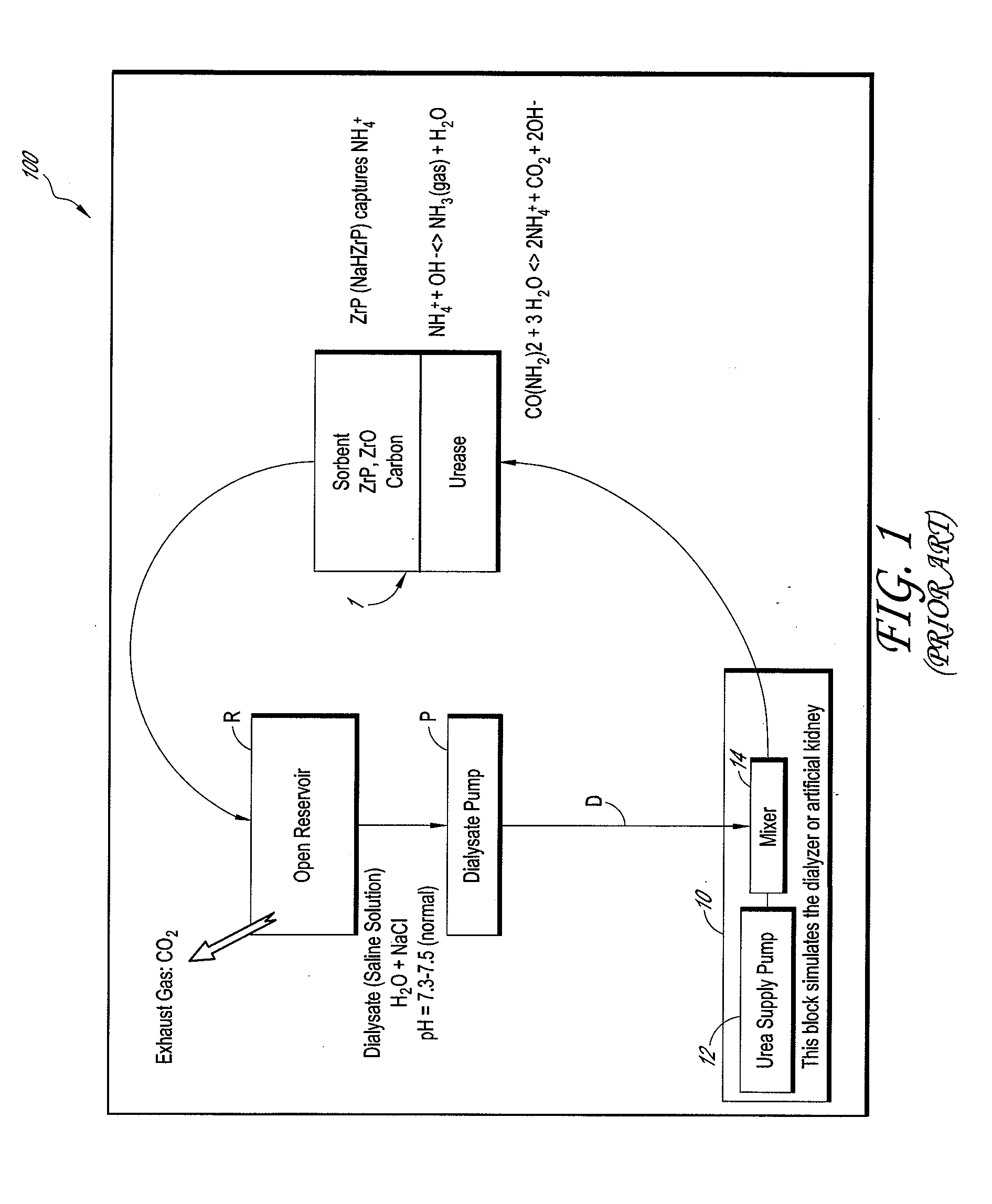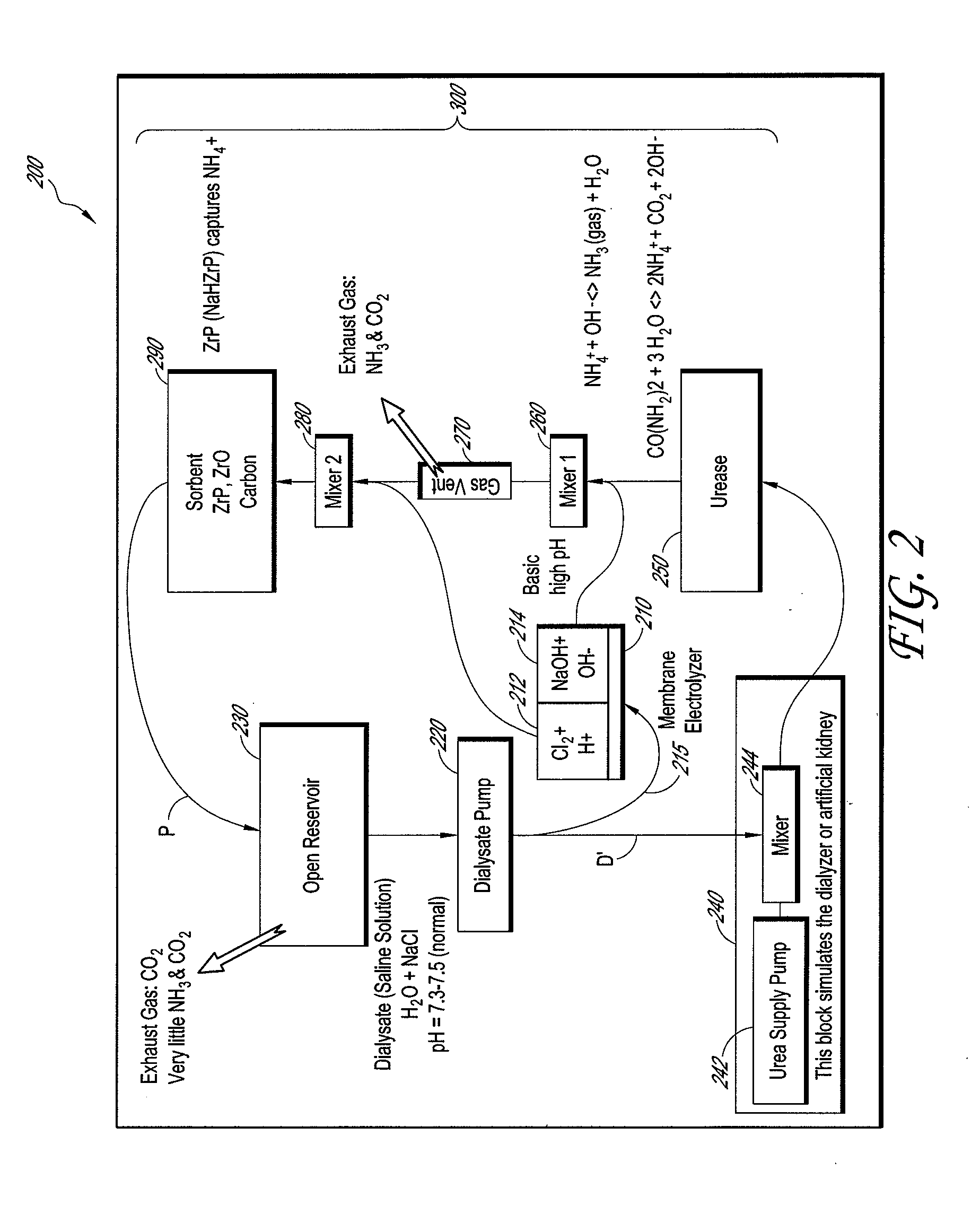Membrane electrolyzer and hemodialysis system using the same
a hemodialysis system and membrane electrolyzer technology, applied in the direction of dialysis, apparatus sterilization, water/sewage treatment by oxidation, etc., can solve the problems of high cost of sorbent hemodialysis, high cost of sorbent based dialysis, and high cost of sorbent cartridges
- Summary
- Abstract
- Description
- Claims
- Application Information
AI Technical Summary
Benefits of technology
Problems solved by technology
Method used
Image
Examples
Embodiment Construction
[0015]FIG. 2 shows a portion of one embodiment of an improved sorbent hemodialysis system 200. In particular, FIG. 2 shows a dialysate flow path or circuit P of the hemodialysis system 200. In the illustrated embodiment, a membrane electrolyzer 210 receives at least a portion 215 of a dialysate D′ flow pumped by a dialysate pump 220 in fluid communication with a dialysate reservoir 230. The remaining dialysate flow D′ is pumped through the dialyzer 240, which can have a urea supply pump 242 and a mixer 244. The dialysate flow loaded with urea D exits the dialyzer 240 and passes through a urease section 250.
[0016]The membrane electrolyzer 210 splits the dialysate flow 215 into an acidic component 212 and a base component 214. The base component 214 is added to the dialysate flow D downstream of the urease section 250 via a mixer 260, and is used to raise the pH of the dialysate flow D to effect “blowing off” of ammonia and carbon dioxide as a gas via a gas vent 270. Then, the acidic ...
PUM
 Login to View More
Login to View More Abstract
Description
Claims
Application Information
 Login to View More
Login to View More - R&D
- Intellectual Property
- Life Sciences
- Materials
- Tech Scout
- Unparalleled Data Quality
- Higher Quality Content
- 60% Fewer Hallucinations
Browse by: Latest US Patents, China's latest patents, Technical Efficacy Thesaurus, Application Domain, Technology Topic, Popular Technical Reports.
© 2025 PatSnap. All rights reserved.Legal|Privacy policy|Modern Slavery Act Transparency Statement|Sitemap|About US| Contact US: help@patsnap.com



